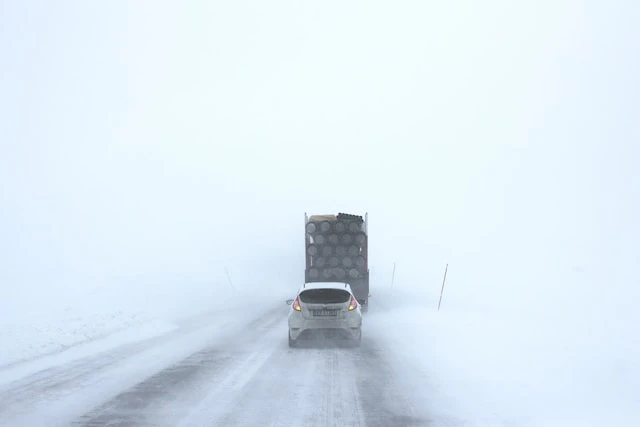Technical
What Is Synthetic Fuel?

You’ve probably heard that the way that the oil and gas fields that produce the petrol and diesel we put in our internal combustion engine (ICE) cars were once ancient forests that were somehow buried and transformed into the form they are in today. You may have wondered whether it would be able to make something chemically identical to crude oil or refined oil in the lab, given that we know the chemical formula for petrol and diesel.
Well, you aren’t alone in wondering whether that could be possible. The truth is that it is possible to make petrol and diesel artificially in the lab without taking the aeons of time involved in fossil fuels. The result is called synthetic fuel or synfuel.
Synthetic fuel differs from biofuels such as ethanol because it is designed to be completely chemically identical to ordinary bog-standard fossil fuel petrol. This means that it can be used as is in a car with an unmodified internal combustion engine without being blended, which is what happens with biofuels (you know – E10 is 10% ethanol and 90% fossil fuel petrol).
Synthetic fuel is nothing new. In fact, the idea of making petrol for cars (and planes) from something else was tried successfully back in 1930s Germany, except that they used coal as their starting feedstock. This was one reason why the German army was such a threat during World War 2: they could manufacture their own synfuel out of coal, which they had, rather than relying on oil wells overseas and the associated supply chain. However, this method is unlikely to be used these days, as coal is still a type of fossil fuel and wouldn’t suit the purposes.
The process of making synthetic fuel or synfuel starts with the very common gas hydrogen. The hydrogen is then combined with carbon (carbon monoxide) to make syngas (chemically identical to natural gas but made artificially). This is where the exciting part of synfuel comes in, as the process can either take the carbon from some source or it can even capture the carbon out of the atmosphere. This means that when the synfuel is used in an internal combustion engine, the carbon is just going back into the atmosphere where it originally came from rather than adding new carbon. (OK, you could argue, like one of my relatives does, that what’s in fossil fuels was originally in the atmosphere when that ancient forest was green and growing, but that’s another topic and another debate altogether that I won’t get into here.) Anyway, syngas is made up of hydrogen and carbon molecules (it’s a hydrocarbon, as opposed to a carbohydrate) and can be messed about with to make different types of fuel, including petrol.
The three main ways of producing synfuel are biomass to liquid, power (or electricity) to liquid and sun to liquid.
The biomass to liquid process uses organic matter as a feedstock, which provides the hydrogen and the carbon. This organic matter doesn’t have to be an oil-producing crop, which is what happens with some types of biofuel. Instead, agricultural waste matter can be used as a feedstock, as can domestic waste. In fact, if the idea of synfuel catches on and becomes more widespread, they’ll be able to use what’s in the landfills and what we chuck out. This avoids the problem of deciding whether good crop-producing agricultural land should go to producing an oil crop to power internal combustion engines or to producing food. This type of synfuel can be referred to as biofuel, although “biofuel” is a confusing term that covers ethanol as well as biodiesel, so it’s best avoided.
Power to liquid production produces the type of syngas known as e-fuel. In this process, electricity (which can be generated by renewable means, such as wind or solar) splits a water molecule to get hydrogen and oxygen, and the hydrogen is then combined with carbon from the atmosphere. The main byproduct is oxygen, and if the process can use renewable sources of energy, then it’s as close to carbon neutral as petrol can be.
Sun to liquid production is less common. In this process, a reactor catches the heat energy of the sun (not photovoltaic energy or solar power) and uses that energy to convert water and CO2 into syngas.
I think it’s highly likely that synthetic fuel is going to become more common, as a lot of us know that ICE vehicles suit our lifestyles and needs best (tradies, for example), who can’t afford to take large chunks out of their working days to recharge, travel a lot and need something that will take all the gear needed for their work. This is because Formula 1 racing is planning to use it to power all its ICE racing cars, hopefully by 2026. We’ve seen a lot of technology that started off in the racing world making its way over to general use, so let’s keep our fingers crossed. In addition, Porsche has bankrolled a synthetic fuel plant in Chile that uses wind power and the power-to-liquid method. This opened at the end of last year (2022) with plans to produce 11,000 barrels of synfuel this year.
Given that Australia has a lot of sunshine and the potential for using it for either the sun-to-liquid or the power-to-liquid process (with the help of solar panels), it’s not surprising that they’re setting up a plant in Tasmania (funded by Porsche again), which is due to kick into action in 2026. Watch this space!
Why You Need To Stay Alert During Winter (Even In A Car With All The Driver Assistance Features)

No review of any car produced from 2010 onwards would be complete without a list, or at least a partial list, of some of the driver aids. Most of us have noticed that cars have become more electronic and have more computer-controlled gadgets (and we may have grumbled about it if we are DIY mechanics who know how to use a spanner but go to pieces when confronted with anything containing a chip). The list of driver aids seems to be getting longer and longer, starting with basic things like rear view cameras and going on to things like traffic sign recognition, lane departure correction and more.
There’s no denying that these aids are very useful – I love the reversing camera we fitted onto our Honda Jazz – but it’s important that we don’t become too reliant on them. Even though it may seem as though the clever people who design these systems and sensors are trying to replicate a horse (autonomous, 360° audio warning system, 210° cameras, voice activation, carbon-neutral, emission-free, running on 100% biofuel and completely biodegradable), one has to remember that your car isn’t actually intelligent – like KITT from Knight Rider – and isn’t a horse, and those sensors and systems can have problems in certain conditions.
These conditions tend to crop up a lot in wintertime – the time when driving is most hazardous. One reason why this happens is because the sensors are located on the outside of the vehicle (obviously). On wet days, mud and slush gets thrown up over your car by other vehicles on the road, and this can obscure the sensor. Even something as simple as condensation can cloud the sensors, not only in its own right but also because the condensation can collect dust and because that condensation can freeze if the temperatures go below zero. This is annoying in the case of cameras but absolutely wreaks havoc on all of the other safety systems that rely on the cameras.
The field of image recognition is a hot one for experts working in the field of AI and smart machines. However, this is because we can do it all the time without thinking about it. That’s why those CAPTCHA “prove you’re not a robot” tests often ask you to select all the squares with images of things like motorbikes and traffic signals. (Some suspect that your answers don’t just prove that you’re human but they’re also used to train computers to recognize these items, which is probably why you’re asked to identify things that a smart car might have to identify.) If you’re paying attention, you can identify an oncoming truck on a rainy day, and you can rely on a range of cues to tell you where the side of the road is. Computers don’t quite have this ability, as rain, hail, snow, slush and fog make things tricky. If your car’s Advanced Driver Assistance Systems (ADAS) have been trained on scenes of, say, traffic signs or lane markings that were taken on sunny days, the system will struggle to recognise a traffic sign that’s obscured by fog, has a possum sitting on top of it, has snow or frost covering some of it, or has been used as a target by someone with a shotgun. ADAS can’t extrapolate where the lanes are from a little glimpse of road that’s otherwise covered by snow or piles of hail.

Systems based on radar, such as pedestrian detection and advance collision warning systems also have trouble in cold, wet windy weather. Although fog and frost aren’t a problem for radar, rain, snow and hail are problems. This is because of the way radar works: the radio waves go out, hit something and bounce back, and the time between the signal going out and when it comes back can be used to calculate the distance (or the speed, in the case of police radar systems). However, the radio waves will bounce off anything and be scattered by anything, whether that thing is a hailstone or a heavy truck. Contrary to the rumour going around that radar systems don’t work in the rain, the truth is that they do work – they just don’t work as well. This means that if your car’s ADAS is radar-based, then it might not do quite as good a job on a rainy day.
What this means for you as a driver is that during winter driving conditions, you need to be extra alert – as alert as you would be if you didn’t have all those ADAS in place. For years, we’ve been told that during winter driving conditions, it’s important to slow down and take extra care, and this advice still holds even if your car has all the ADAS bells and whistles. As all car manufacturers are quick to point out, even the fanciest systems are not intended to replace good driving and safety is ultimately the responsibility of the driver.
If you have those sensors and you like to use them (like me and my reversing camera), you may need to wipe them down a bit more often during winter (a paper towel will do the trick). If you’ve got frost on the sensor – which will probably happen if you have frost on your windscreen – then give the sensor a bit of a slosh with the warm water you have probably used to get the ice off your windscreen. Then drive safely!
The Li-Ion In Winter: What Cold Weather Does To EV Batteries

A number of you will have bought your very first EV in the past 9 or so months (i.e., when the warmer weather began in spring through to autumn). Now that we’re heading into winter, there are some things that you will need to be aware of as the colder days roll around. This is because EVs don’t behave like ICE (internal combustion engine) vehicles.
You may well be glad that you don’t have to sit there and warm up the engine before you get going (although I have to say that most modern ICE vehicles don’t need you to do this – thankfully!). However, you may find the following scenario has happened to you:
You set out on a chilly morning as usual in your PHEV or BEV and head off on your normal commute. You had topped up the battery as usual the night before and you’ve got plenty of charge. However, this morning, you notice that the range seems to be much lower than usual, meaning that you have to plan for an extra stop to recharge. Because you’d planned your time according to what you normally do, you don’t have time to stop off and recharge right now if you want to be in time for work, so you plan for an extra stop on the way back home, meaning that you lose out on some family time. If you’re really unlucky, you have to limp into the charging station on the last dregs of the battery. You may wonder what on earth happened to drain your battery so quickly – and you will have a fair amount of time to stop and think about this as you wait at the charging station.
In fact, quite a few drivers have found that in cold wintery weather, battery range can drop by as much as 40%.
Now, one of the reasons why your battery may have drained more quickly in cold winter weather is obvious. If it’s a bit chilly, your natural instinct is to turn the heater on so you don’t arrive at work with a dripping red nose and chilly fingers. Obviously, the heat that comes through the climate control system in your EV has to come from somewhere, as the system can’t use the waste heat from the engine, as is the case in ICE vehicles. This heat has to be supplied by the battery, so that puts extra demand on it, meaning that you end up with less range and a battery that drains more quickly.
Now, you could always bundle up in an extra coat, a hat, a scarf and a set of mittens for your drive to avoid using the heater and spare your battery. However, there are other options. The first is to make the most of functions such as heated seats. Although these will also use the electrical energy stored in the battery, it’s a lot more efficient to heat your back and bottom with a heated seat than it is to heat the air enough to get you comfortable. With some models of EV, such as Tesla, you can also pre-warm your car while it’s waiting on the trickle charge so that it’s nice and warm when you get in, and the electricity used to heat things up hasn’t drained the battery as much as it would have if the car wasn’t plugged in.
However, this isn’t the only reason why your battery drains so quickly in colder weather. It’s an unfortunate reality that lithium ion batteries sulk when the temperature drops (it’s all to do with the electrochemical reactions going on inside the battery). You may remember from back in high school science days that you can speed up a chemical reaction by adding heat and slow it down by cooling things down, and the same applies to the chemical reactions that make the battery work. Because things inside the battery are sluggish, they don’t produce as much power, so your range goes down. Just to add to the insult, because of this slowed chemical reaction, regenerative braking doesn’t work as well, which also adds up to an extra reduction in the range.
Now, the designers of EVs have been smart enough to know that if things get too cold, the chemical reaction will stop altogether, so they have included a heating system in the battery pack – which, of course, runs off the battery’s own power. If you, like many others, have set your vehicle up on trickle charge overnight, you may find in the morning that you haven’t got as much charge overnight as you had hoped. This is because some of the energy has gone to heating the battery. Parking the car inside overnight while it charges can help overcome this problem, as this helps the battery stay in the Goldilocks Zone of temperature (not too hot and not too cold but just right).
Another reason why you may not have got as much charge as you had hoped is also a result of the sluggishness of lithium in the cold. In cold temperatures, the lithium is slow to release its charge and it’s also slow to receive charge as well (charging is just a reversal of the chemical process). This may mean that you have to allow more time to charge your battery, although it’s important to bear in mind that frequently using superfast chargers will shorten your battery’s lifespan.
Some aspects of winter driving are unavoidable. You probably will have to use the headlights more often in the darker days, along with the demisters to unfog your windows and the windscreen wipers. These will all put extra demand onto your battery. If winter in your part of the country means strong winds, these will also put an extra demand on your battery, as getting your vehicle up to speed means that wind resistance will have to be overcome. However, by following the advice in this article, you’ll be able to claw back a little extra range, so you see a drop of only ~10% rather than 40%.
To recap:
- Use heated seats and steering wheels rather than the climate control to stay warm.
- Preheat your vehicle while it’s still charging.
- Allow for extra charging time (and possibly more stops at the charging station).
- Park your vehicle inside overnight.
- Wear warm winter clothes inside the car so you don’t have to switch on the heater.
Choosing The Right Driving Posture
When I learned to drive, I wasn’t told much about correct driving posture apart from ensuring that my feet could reach the pedals (obviously) and that my hands were in the “ten past two” position*. However, as time went on and I drove more, I soon came to learn that there’s more to sitting comfortably, and there’s a reason why car manufacturers take so much trouble with designing seats and making them adjustable in many different ways.

If you’ve felt stiff and sore after driving for a long time, then your driving posture might have something do to with it. Sitting down in a car seat is no different from sitting down in an office chair from some perspectives, and it’s important to allow for regular breaks during a long drive so that you can stretch your legs, etc. – just like you would if you were at work. Your office chair is probably not as comfy and cushy as the driver’s seat, unless you’ve done what I’ve done and converted the seat from an old Ford Falcon into an office chair (it’s a pig to move in and out, though, as I haven’t put castors on it).
Although the idea would be to get up every 20 minutes, we all know that this isn’t always possible when driving (every hour is more like it). However, you can reduce the strain on your body – and it is strain – from holding in one position for ages by ensuring that you’re sitting correctly. If you’ve felt stiff after a long drive, then this might help you.
Everybody’s body is different, so I can’t give precise measurements and angles. You may have long legs in proportion to your body, a big bum or a long back. You may be a massive great big dude over six feet tall, or you may be a petite woman reaching five feet in her high heels. This means that what’s ideal for you probably won’t be idea for someone else. In fact, what’s best for you might not even be possible in some vehicles, so always test out the seats before you buy a new car. This means that in the case of a couple consisting of the big dude and the petite lady, you’ll need to compromise (not ideal) or even buy two cars.
OK, to make sure you’re sitting comfortably, let’s begin with some basics. Take your wallet and/or phone and anything else out of your back pocket, because that will have an effect. Now take time to find out what a neutral spine feels like. A neutral spine is not a straight back, as the human spine is supposed to have a nice gentle S-bend shape to it. Stand up and, if you can, check in a mirror side on. Ensure that your weight is evenly distributed on both feet and don’t fully lock your knees. Now imagine that there’s a string attached to the top of your head and that it’s pulling you up.
For more help with knowing what a nice neutral spine feels like, I suggest chatting to your friendly local physiotherapist, taking up Pilates or both.
Now to get into the car. Oddly, you need to start with the seat in completely the wrong position and then bring it into the right position. If you’re doing this for the first time in a new car (or a car that you’re considering buying) then move everything as far as it can go – seat angle, steering wheel and all. Push the seat right back as far as it can go. Now you’re ready to adjust it.
Let’s start with the seat height. In fact, the seat height is the least adjustable thing in many cars, so if you can’t get the height right, you may have to consider another vehicle. Your hips should be about as high as your knees or just a smidge lower (but not too low). However, you shouldn’t be so high that you hit your head on the top of the car or that you have to crane your head down to see the instrument panel. If you are too low down, you can use a cushion to get you high enough. Also check where the edge of the seat is relative to the backs of your knees. If the edge of the seat pushes into your knees, this will restrict your circulation, and riding in that car will be very uncomfortable. Seriously, this matters. I once owned a car that did this to me. It was great in other ways but the problem with circulation in the feet and legs was so bad that we sold the vehicle (hope it suited the new owner better). Reach down and see if you can fit two fingers between the edge of the seat and your knees. If you can, you’re all good.
Now bring the seat forward so you can reach the pedals (and the footrest) while keeping your back snugly against the seat. You should have a small bend in your legs, as locking your legs for long periods isn’t all that good for them. Your heels (in bare feet or ordinary shoes, not high heels) should be on the ground rather than dangling, and you should be able to push the pedal down with your heel on the floor as the fulcrum of a lever. It’s possible to buy pedal extenders so you can do this if the car is perfect in every other way. Of all the things that make driving tiring, an accelerator pedal that you can’t operate with your heel on the floor is the worst, and I’ve driven a couple.
If you can adjust the tilt of the seat, play around a bit until you find the position that gives you a neutral spine. Women will naturally have a more forward tilt than men thanks to the shape of the female pelvis (high heels were invented to exaggerate this) but not too extreme. Modern car seats have been designed to prevent “submarining”, which is when someone slides out under the seatbelt during the sudden stop in a crash, but this slightly backward angle isn’t all that good for our backs. There’s not much you can do about this, so get the tilt as close as you can to what gives you a neutral spine.
Now for the seat back. This should not be at right angles to the ground (straight up and down) but it shouldn’t be so far back that it forces you/allows you to slouch your chest, head and shoulders forward. Keep that spine in neutral position. If you have lumbar support, this should sit snugly into your lumbar lordosis (the curve in your lower back just above your pelvis). Some cars don’t have height-adjustable lumbar support (bad luck), and just have lumbar support that’s adjustable in terms of depth. If your car doesn’t have lumbar support or if it’s in the wrong place for your body (I have a long back in proportion to my legs, so this happens to me a lot), then a lumbar cushion is worth buying and fitting to your car.
Moving on up, make sure that your shoulders can press against the back of the chair, then adjust the head rest. The head rest is supposed to be a head rest, not a neck rest, so sit with a neutral spine and ensure that the head rest touches the back of your head.
Now to adjust the steering wheel. You should be able to get both hands on it with a slight bend in your elbows – driving with straight arms puts strain on your shoulders and neck. The best position isn’t “ten to two”, as I was taught, but quarter past nine (nine and three) down to seven and five. Adjust the height of the steering wheel to suit you.

In a perfect world, we’d be able to customize everything so that it suited our bodies perfectly, especially when it comes to female bodies. Traditionally, car seats have been designed to fit the average male, but manufacturers have seem to have woken up to the fact that half of the population has a female body and are factoring this into their seat designs and safety features (Mazda and Volvo, for example). That’s a topic for another day (and one I’ve discussed before) but in the meantime, if you aim to have a neutral spine and to keep a gentle bend in your arms and your legs while driving, you should be about right.
And don’t forget to allow for regular breaks to get up out of your seat during a longer journey.